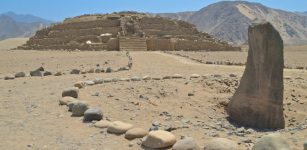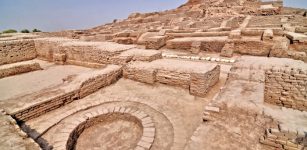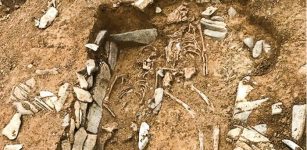3,500-Year-Old Skull And Thighbone Discovered In Sapinuwa Antique City Of Central Anatolia
Jan Bartek – AncientPages.com – A 3,500-year-old fragmented skull and femur thought to belong to the Hittite period were recently unearthed in Sapinuwa, nowadays Çorum, in central Anatolia, Turkey.
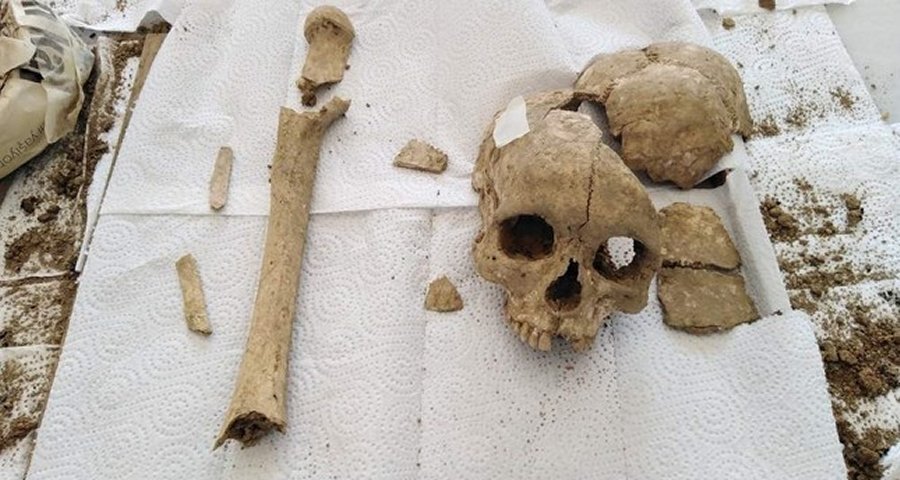
The skull and femur discovered are thought to belong to the Hittite era. AA Photo
Sapinuwa was one of the major Hittite religious and administrative centers, a military base and an occasional residence of several Hittite kings. The palace at Sapinuwa is mentioned in several historical texts from Hattusa.
The ancient civilization of the region had a tradition to cremate and hid its dead, and this discovery will possibly shed more light on the civilization, its mysterious people, and help to learn more about Anatolia’s historical past.
Most of the ancient documents describing this culture that was once a rivaling threat to the ancient Egyptian kingdom were lost in the sand. The Hittites were once one of the most powerful ancient civilizations that occupied the ancient region of Anatolia.
This long-gone culture has been of great interest to archaeologists and historians but unraveling the truth about the Hittites has been a difficult task.
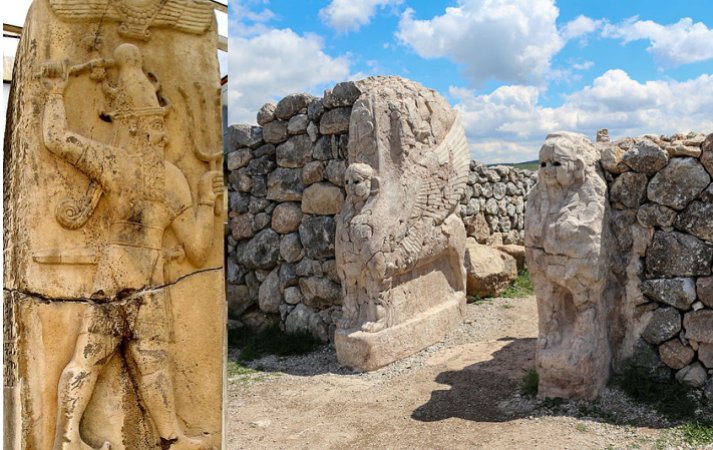
Left: Neo-Hittite storm god “Tarhunzas” in the Aleppo museum. Credit: Verity Cridland, Wikipedia, CC BY 2.0 – Right: Sphinx Gate, Hattusa, Turkey. Credit: Bernard Gagnon , Wikipedia, CC BY-SA 3.0
The discovery of the skull and left thighbone made by archaeologists led by Professor. Dr. Aygul Suel from Hittite University’s Archaeology Department is very important.
Only very few skeletal remains of Hittite people have been unearthed, and no royal tombs belonging to Hittite kings have been found to date, reports Daily Sabah.
A preliminary analysis of the remains reveals that the skull belongs to a young woman. An ancient DNA study and carbon-14 dating to be conducted on the bones will further reveal their genetic make-up and racial kinships.

Twelve Hittite gods of the underworld in the nearby Yazilikaya, a sanctuary of Hattusha. Credit: Klaus-Peter Simon, Wikipedia, CC BY 3.0
The Hittite Empire in the Late Bronze Age was a civilization that played an important role in the political and social life of its time. This is also when the alphabet was developed, and the world saw the rise of the Hittites. They became some of the world’s first documenters of history, recording real events instead of writing epics or tales about gods or mythological heroes.
See also: More Archaeology News
However, their emergence as a major power and exit from the world stage remain largely shrouded in mystery as they practically disappeared off the face of the earth with no archaeological footprint. What’s known is that they were Indo-Europeans and enjoyed considerable influence on civilizations in Anatolia and northern Syria. Hattusha was their main capital.
They left many written tablets, mostly political and commercial correspondences with Egypt and other neighboring political powers, but alas, these have been the only remnants left to archaeologists working to shed light on their history.
Written by Jan Bartek – MessageToEagle.com – AncientPages.com Staff Writer


